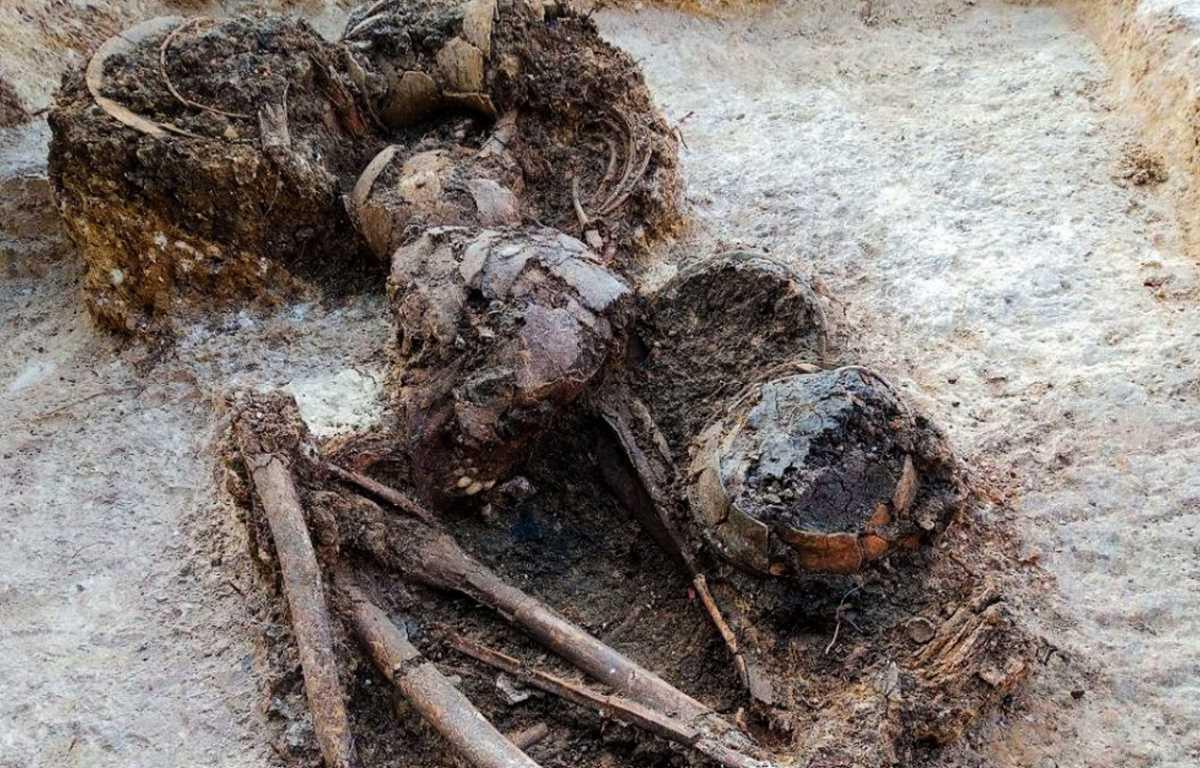Archaeologists from the National Institute of Anthropology and History (INAH) have uncovered numerous funerary offerings among 48 burials at Cima de San José.
Cima de San José is a pre-Hispanic settlement associated with groups from the Pueblito and Huasteca cultural complexes, located in the municipality of Tula, Mexico.
Excavations were conducted in preparation for a highway connecting the municipalities of Mante, Ocampo and Tula, revealing the remains of 48 individuals and 18 hearths that correspond to the Early and Middle Classic periods between AD 250 and AD 650.
The individuals were wrapped in burial shrouds and deposited in carefully excavated graves covered by tombstones. A majority of the burials were placed in a seated, dorsal, or lateral flexed position, with predilection for orientations related to the sunrise and sunset.
According to Esteban Ávalos from INAH: “What is striking is the number of offerings that were deposited, such as black and red Zaquil type vessels, ceramic pipes, seashell earrings, deer bone punches, white flint flakes, obsidian blades, and green stone earrings.”
The most notable object is a necklace of 29 sea snail earrings, which were worked to resemble the fangs of carnivorous animals.


